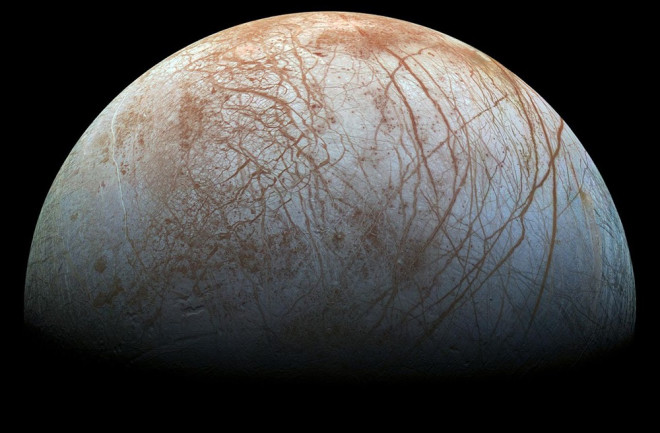(Credit: NASA / Jet Propulsion Lab-Caltech / SETI Institute) Hubble hasn’t found aliens on Europa, but it may have found new evidence that plumes of salt water from the moon’s globe-spanning salty ocean can escape through cracks in its icy shell. Using its Space Telescope Imaging Spectrograph (STIS) instrument, Hubble captured far-ultraviolet images of what could be geysers of water from beneath the surface, erupting in Europa’s southern hemisphere. If the features in those images are really geysers, that could be very good news for future missions to Europa, providing an easier source of samples from Europa’s subsurface ocean and making it easier to search for signs of life beneath the ice. Space Science Telescope Institute astronomer William Sparks and his colleagues borrowed a method from exoplanet research and applied it to a potentially habitable world much closer to home (in relative space terms, anyway; Europa is about 390 million miles away). When an exoplanet passes in front of its star, astronomers can look at the very edge of the visible part of the planet, called the limb, to see what wavelengths of light from the star get absorbed by the thin band of the exoplanet’s atmosphere. Because different chemicals absorb light at different wavelengths, that can yield clues about what alien atmospheres are made of. In early 2014, Hubble looked for features along Europa’s limb that might absorb the sunlight reflected by Jupiter. Hydrogen and oxygen both absorb light in the ultraviolet wavelengths, so Sparks and his colleagues looked at Europa in the far ultraviolet. Hubble sent home ten images of Europa’s silhouetted surface, and features that might be geysers appeared in three of them. “Anything that absorbs [light] will appear in our image. We presume it to be water vapor or ice particles because that’s what Europa’s made of and those molecules do absorb at the wavelengths we observed at, which is why we chose those wavelengths,” said Sparks during a press conference earlier today.
Hubble Finds More Evidence of Plumes on Europa

Newsletter
Sign up for our email newsletter for the latest science news
0 free articles left
Want More? Get unlimited access for as low as $1.99/month
Stay Curious
Sign up for our weekly newsletter and unlock one more article for free.
View our Privacy Policy
Want more?
Keep reading for as low as $1.99!
Already a subscriber?
Find my Subscription
More From Discover
Stay Curious
Subscribe
To The Magazine
Save up to 40% off the cover price when you subscribe to Discover magazine.
Copyright © 2025 LabX Media Group
